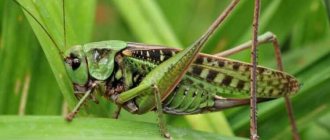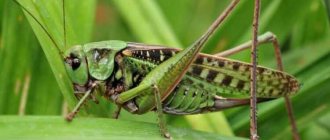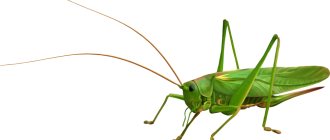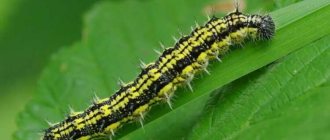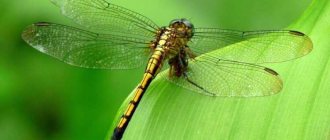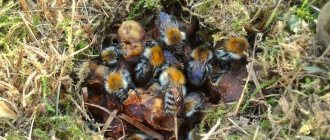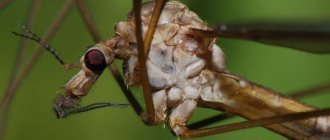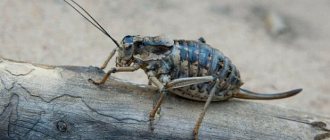When hearing the word “grasshopper,” many people remember a simple children’s song and imagine a green, harmless creature that “doesn’t even touch a booger.” Alas, the grasshopper is a predator. And not only boogers, but also flies, ticks, butterflies - their favorite delicacy.
The grasshopper is an arthropod insect belonging to the order Orthoptera. There are about seven thousand species of them on the globe.
Habitats
The grasshopper can be found in every corner of the earth except Antarctica. He prefers green edges, valleys, gorges in which lush grass grows. In Central Asia, it lives high in the mountains, trying to hide among plants from the scorching sun.
In the Alps, the grasshopper chooses high-mountain meadows, loves open spaces, and avoids forests. You can meet a grasshopper in the Far East and Africa, in Denmark and Finland, in England and in the sultry jungle.
Description
The name grasshopper originates from the ancient Russian language - izok, meaning June.
More than 7,000 species of these insects are known, which are found in every corner of our planet except Antarctica. Apparently the harsh Antarctic climate was not to my liking.
Color palette
The color of a grasshopper depends on its habitat and species. The grasshopper living in Russian meadows and clearings or in the tropical zone has a camouflage green color. A desert grasshopper or one that has chosen a marshy area is spotted and brown.
South African grasshoppers camouflage themselves with the color of rocks to escape predators. Striped and peacock colors are also found. But orange and red grasshoppers came to Russia from China, and you can only admire them in greenhouses.
Appearance
Externally they also differ. Grasshoppers are most often green. This color helps them camouflage themselves in foliage to make it easier for them to forage for food.
They have a movable head with sharp jaws. Powerful hind legs, short front legs. Incredibly long whiskers, which locusts do not have.
The body of the locust is brown or yellow, although it can be green, brown, or gray. The antennae are short, as long as the head. The hind legs are shorter but stronger. We hope it is now clear how to distinguish a grasshopper.
Features of reproduction
Males attract females with loud singing. After mating, the female eats the spermatophore, which consists of seminal fluid and a sticky substance. The seminal fluid enters the female's oviduct. Eggs are laid within two to three hours. Their number can reach up to 1000.
Eggs are laid in shallow holes, on grass stems or under the bark of trees and remain there throughout the fall and winter. The larvae hatch in the spring. They molt several times and, bypassing the pupal stage, immediately turn into a grasshopper.
Some species of female insects do without males and lay unfertilized eggs, from which only female grasshoppers grow.
A little anatomy
The body can be from 1.5 to 15 cm in length. It can be conditionally divided into three parts: head, chest, abdomen. There are two pairs of wings. On the massive head there are organs of touch (whiskers) that are longer than the body. The eyes are big.
Males are smaller than females. 3 pairs of legs. The chirping sound is made by the elytra, one of which is a “bow”, the second is a “resonator”. Each variety has its own sound scale. The ears are located on the front legs.
If you carefully look at the photos of grasshoppers, you can see a lot of interesting and unusual things.
Favorite food
A grasshopper will gladly swallow a caterpillar, a butterfly, small insects, larvae, and even representatives of its own species that turn out to be weaker than it. But he does not disdain plant foods, namely: grass, stems, flowers, cereals and the like.
Oddly enough, grasshoppers even bite people (though not to get enough) who threaten them. The bite of a grasshopper is painful, because the insect has strong, powerful jaws.
Nutrition
Who would have thought, but such a small and charming insect in most cases, depending on the species, is a predator.
It selects smaller insects for food. However, if the hunt was not successful, he does not mind eating young plants.
Loud-voiced singer
The grasshopper chirps on a cool day or in the evening, and occasionally at night. This happens thanks to its elytra, which act as a kind of musical instrument.
As a result of vibration, a sound appears that intensifies when the insect's wings rise. Each type of grasshopper has its own melody.
It is called the music of nature. During the mating season, males make a peculiar crackling sound, which females cannot do.
Sensing danger, the grasshopper immediately falls silent. This is how he escapes from his enemies. To hear a clear-voiced singer, you should not talk loudly or make sharp sounds. Listen to the silence and you will hear the trill of a grasshopper.
Incomplete transformation
This development suggests that the insect, when emerging from the egg, has a similar structure to the adult, but the size of such an individual is much smaller. Thanks to intensive weight gain, the insect grows, but the chitinous cover does not allow the individual’s body volume to increase. Then the individual moults and the cover is shed. Now the soft cuticle remaining after molting is straightened out. Then the insect undergoes several more molts, but the pupa does not form. After 4-6 molts, the individual becomes mature, its wings are fully formed.
Pest or helper?
A grasshopper can bring both harm and benefit to people. For example, it destroys buds, flowers and leaves of vineyards, tobacco plants, citrus fruits, and tea.
Summer residents also do not want to see grasshoppers on their plots, since its larvae are terribly voracious, and during molting they feed on young shoots.
However, grasshoppers can also be useful. They perfectly fight the Colorado potato beetle, which often attacks potatoes, eat harmful larvae that mutilate tree bark, and exterminate insects that eat plants.
Character and lifestyle
The lifestyle, as well as the characteristic features, depend on the species, and there are quite a lot of these species. Sometimes different species have similar shapes, sometimes their appearance is very different. For example, the green grasshopper has a body length of up to 4 mm, is green in color, and feels especially comfortable in warm climates.
The photo shows a green grasshopper
But greenhouse grasshoppers came to us from distant China. These are the smallest grasshoppers in the world. They live only in greenhouses. The largest grasshopper is the Giant Weta. This representative of the insect world weighs about 80 grams.
As a rule, grasshoppers do not cause significant damage to humans, and therefore are not considered harmful. Moreover, many nationalities have long included this insect in their diet. The grasshopper itself does not attack humans.
The photo shows the giant grasshopper Ueta
But if he has a hopeless situation, he can bite, and his bites are quite painful, because the insect is equipped with powerful jaws. For their pleasant singing, grasshoppers are even specially kept at home, in a special aquarium for insects - in an insectarium.
If you fight, then how?
Plants should be located away from grasshopper egg laying sites. If the green warbler nevertheless settles on the site, pesticides, means for killing beetles, and various kinds of bait with poison are used.
But there are also mechanical methods of protection: digging up the soil in the fall, and loosening the rows more often in the summer.
Today, there are already biologically pure biological products that help fight insects. They are absolutely harmless to humans and animals.
Let's not forget about the birds, for whom the grasshopper is a real delicacy. If the area has been chosen by titmice, then the jumping singers will not stay there for long.
Spine devil (Panacanthus cuspidatus)
photo https://www.flickr.com/photos/danoxlade
The main defense of grasshoppers is camouflage, as they camouflage themselves among vegetation. But the spiny devil grasshopper (Panacanthus cuspidatus) uses sharp triangular-shaped spines, which cover its entire emerald green body, to scare away. It can repel such serious opponents as birds and small monkeys.
